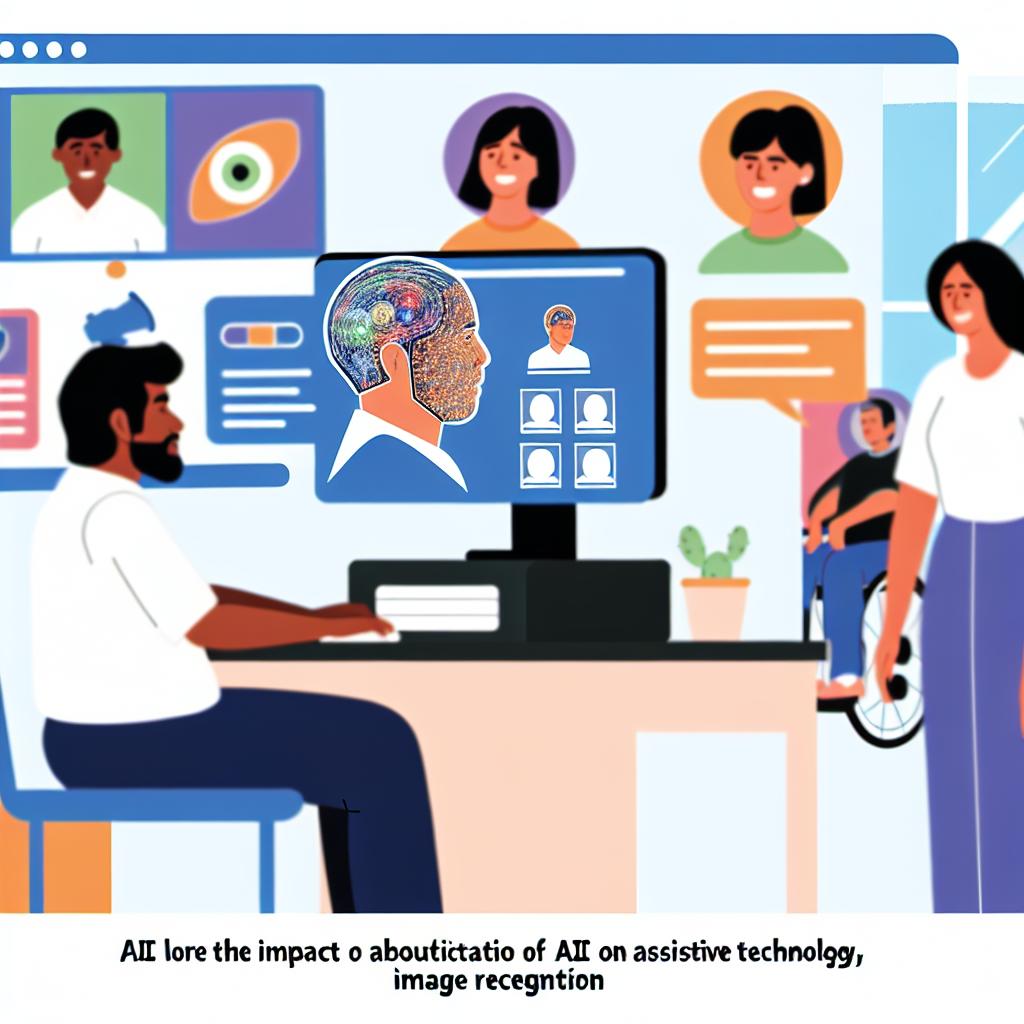The Role of AI in Modern Assistive Technology
The incorporation of artificial intelligence (AI) into assistive technology has revolutionized the way individuals with disabilities interact with their environment. By leveraging the capabilities to learn, adapt, and personalize user experiences, AI-driven tools are designed to enhance autonomy and improve quality of life for people with disabilities. The prominent sectors where AI has made significant inroads include communication, mobility, daily living activities, and education.
Enhancing Communication
Communication is one of the primary areas where AI has had a substantial impact through the development of advanced tools for individuals with speech and language impairments. These AI-enhanced communication tools include advanced text-to-speech and speech recognition technology, which are critical in enabling more natural and effective expression. These tools are optimized through AI algorithms that have improved dramatically over the years, allowing them to handle more nuanced context and provide real-time translations.
The ability of AI to process natural language effectively allows these systems to understand the subtleties of human speech. Unlike traditional systems, modern AI-driven communication tools can adapt to different accents, speech patterns, and jargon unique to each user. This adaptability ensures that the individual using the device has a seamless interaction, thus facilitating more meaningful dialogues and interactions.
Improving Mobility and Navigation
Mobility aids, another vital component of assistive technology, have also gained significantly from AI advancements. AI integration into devices such as electric wheelchairs and prosthetics represents a leap forward in empowering users to navigate their surroundings more comfortably and independently. AI-driven electric wheelchairs, for instance, are equipped with sensors and mapping technologies that analyze the environment and allow the wheelchair to maneuver through intricate terrains with minimal input from the user.
AI also supports visually impaired individuals through advanced navigation apps. These applications employ computer vision and machine learning to provide users with real-time information about their surroundings, including obstacle detection and navigation guidance, thereby enhancing spatial awareness. This technology assists users in traversing pathways and various outdoor settings with an increased sense of safety and security.
Augmenting Daily Living Activities
In the realm of daily living activities, AI-driven home automation systems have dramatically improved the independence of individuals with disabilities. Smart home devices, such as AI-powered voice assistants, have revolutionized how individuals control their home environments. Users can now manage lighting, adjust thermostats, or control household appliances via voice commands, minimizing the dependence on others for assistance in crucial daily tasks.
These smart home systems rely on advanced natural language processing (NLP) techniques to interpret and execute user requests efficiently. This aspect of AI in assistive technology ensures that individuals have more control and autonomy in their daily lives, significantly reducing the need for continuous caregiver support and intervention.
Supporting Education and Learning
AI also provides invaluable support in educational settings, particularly in facilitating personalized learning experiences for students with disabilities. AI-powered adaptive learning platforms tailor educational material and pace according to individual student needs. By assessing each student’s performance and learning style, these platforms create a more customized and effective learning environment.
The inclusion of AI in classrooms also supports the creation of inclusive educational environments. Tools such as real-time transcription services convert spoken words into text for hearing-impaired students. This service ensures these students can fully participate in class discussions, thereby reducing educational disparities and promoting equity.
Future Prospects and Challenges
The foresight for integrating AI into assistive technology holds considerable potential. However, challenges persist that must be addressed to maximize its benefits. One significant concern is ensuring data privacy and tackling ethical issues in AI decision-making processes. These concerns underscore the importance of developing AI systems that are transparent and respect user privacy while mitigating biases inherent in AI-driven decision-making.
Another challenge is the need to make assistive AI technologies accessible and affordable for all sectors of society. Efforts should be directed toward creating affordable AI solutions so that these technologies are within reach regardless of socioeconomic status, which is crucial for promoting inclusivity at a broader societal level.
In conclusion, the development and integration of AI into assistive technology signify a transformative leap towards more inclusive and accessible solutions for those with disabilities. Continuing research and development in this field hold the promise for even more enhancements, potentially further expanding the opportunities and autonomy for individuals with disabilities. Encouraging collaboration between technology developers, policymakers, and the affected communities will be essential in overcoming existing challenges and harnessing the full potential of AI in assistive technology.
For more in-depth information about how AI is influencing assistive technology, you can explore resources from the World Health Organization or the United Nations.
